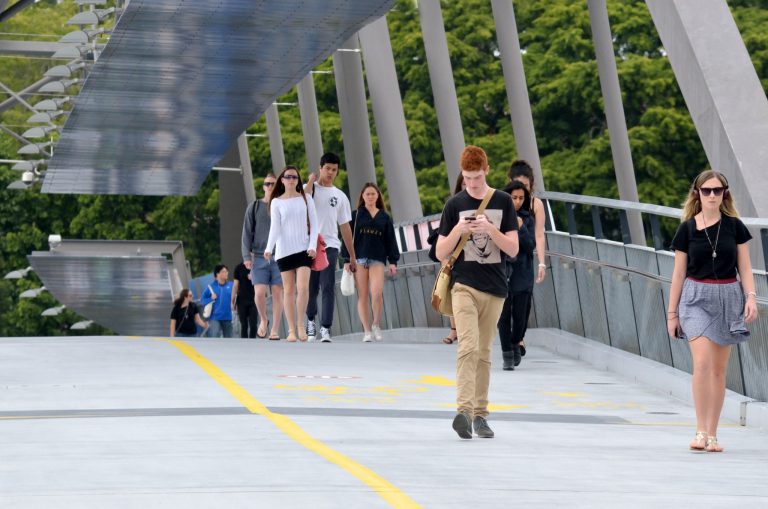
Almost as challenging as obtaining an actual university degree is understanding the different higher education systems in operation across the world.
So, let’s make things simpler by breaking down Australia’s higher education system into simple, straightforward terms.
Why study in Australia? Over 1 billion people around the world rely on Australian discoveries and innovations daily https://t.co/E2bTxvGV2b
— Rod Smith (@AusHCMalaysia) April 3, 2016
Types of Tertiary Institution
Australia’s Tertiary institution system can be divided into two sections: universities and vocational schools.
Vocational Schools
The Australian public vocational system is known as TAFE: Technical and Further Education. These institutes are usually funded by the governments of the state or territory in which they are located. TAFE institutes reward qualifications–Certificates I, II, III, and IV, as well as Diplomas and Advanced Diplomas–in line with Australia’s Vocational Education and Training (VET) sector. In certain niche areas of study, some TAFE schools also award Bachelor’s degrees.
A select number of TAFE institutes focus on just one area of specialised study, but generally the TAFE system offers courses and degrees in many fields of interest, ranging from business and hospitality to the visual arts and information technology.
How much does it cost to study in #Australia?https://t.co/5ydBjZA6cz #studyabroad @FutureUnlimited @StudyAussie #indianstudents #education
— Careerindia (@oneindiastudy) April 11, 2016
Very often, vocational schools have official agreements with universities, allowing students to transfer the credits they’ve accumulated at a TAFE institute towards an advanced Bachelor’s degree. Universities also may offer guaranteed acceptance if a student achieves the minimum grade requirement from their TAFE coursework.
Vocational degrees can also be obtained at private vocational institutes known as Registered Training Organisations (RTO), of which there are over a thousand scattered across Australia.
Universities
The Australian university system is made up of 41 universities; of those, 37 are public and therefore funded by the Commonwealth Government.
Consideration for admission to Australia’s public universities is a centralised process in each of Australia’s states and territories, but international students are often selected by the universities themselves, instead of the wider selection body.
https://t.co/htHU4vGBSt Learn all you can from the mistakes of others. You will not have time to make them all yourself #Apr07
— Study in Australia (@StudyAussie) April 6, 2016
Although domestic students frequently receive scholarships and financial aid from the Commonwealth, international students are not eligible for these awards. Most students who study abroad in Australia pay full tuition fees, unless they receive support from their home university or a third-party sponsor.
A 2013 HSBC report announced Australia as the world’s most expensive place to study abroad, with average tuition fees and living expenses totalling nearly $38,000 USD a year (the U.S. ranked second most expensive, and the UK third). Regardless of this, it is also the world’s most popular country for international students, suggesting that high costs haven’t deterred overseas students from investing in an Australian education.
Course lengths
The majority of Bachelor’s degrees in Australia require three years of study. Students can opt to do a fourth year, referred to as “honours,” in which a thesis is required. This honours qualification would then be listed as part of the degree; for example, “Chemistry with Honours.”
To obtain the Bachelor’s degree, students must pick a major, or focus in on a particular subject area. Universities set specific general and major requirements that the student must fulfill in order to earn the degree.
The Best Places to Photograph the @SydOperaHouse in @Australia https://t.co/3TyiDw7FnS #studyabroad @mappingmegan pic.twitter.com/DYazlUwCtv
— College Tourist® (@CollegeTourist) April 10, 2016
In addition to a major, students have the option to minor in a particular field. A minor requires fewer courses than a major, but is still a specialisation in a certain academic area. Tacking on a minor does not usually increase the time needed to graduate.
Some universities allow students to do double degrees, in which they major in two fields of study. This will often delay the time you graduate beyond a three-year period.
Masters programs across Australia are one to two years long, depending on the program.
Academic expectations
In the case of tertiary education in many parts of the world, students in Australia are encouraged, but not required, to attend lecture. Final marks are usually dependent on one or two exams per term. Of course, certain courses like laboratory work or language classes may place more emphasis on attendance, homework assignments and participation.
The academic culture in Australia is very much based on student involvement. Students are encouraged to speak up in lecture, ask questions and offer opinions (even contrary to those of the professor). Such active engagement is valued much more than simply copying or regurgitating notes. Similarly, it is expected that students demonstrate critical thinking in exams rather than mere memorisation of lecture notes, and marks are rewarded accordingly.
Why you should study abroad in Australia.https://t.co/WYN8yY6qH7
Via @TEANabroad
Photo: Kendra Hildebrand pic.twitter.com/IJeMGpA2dN— Canning College (@CanningCollege) April 7, 2016
Plagiarism is taken very seriously in Australian higher education, and if caught, the student may be asked to leave the university in the most extreme cases.
So, clear as mud? Hopefully the above information has helped a little as you approach your Australian education!
Oz offers some of the finest higher education in the world. It’s no wonder that such a high percentage of international students choose to study for a year Down Under!
Image via Shutterstock.







